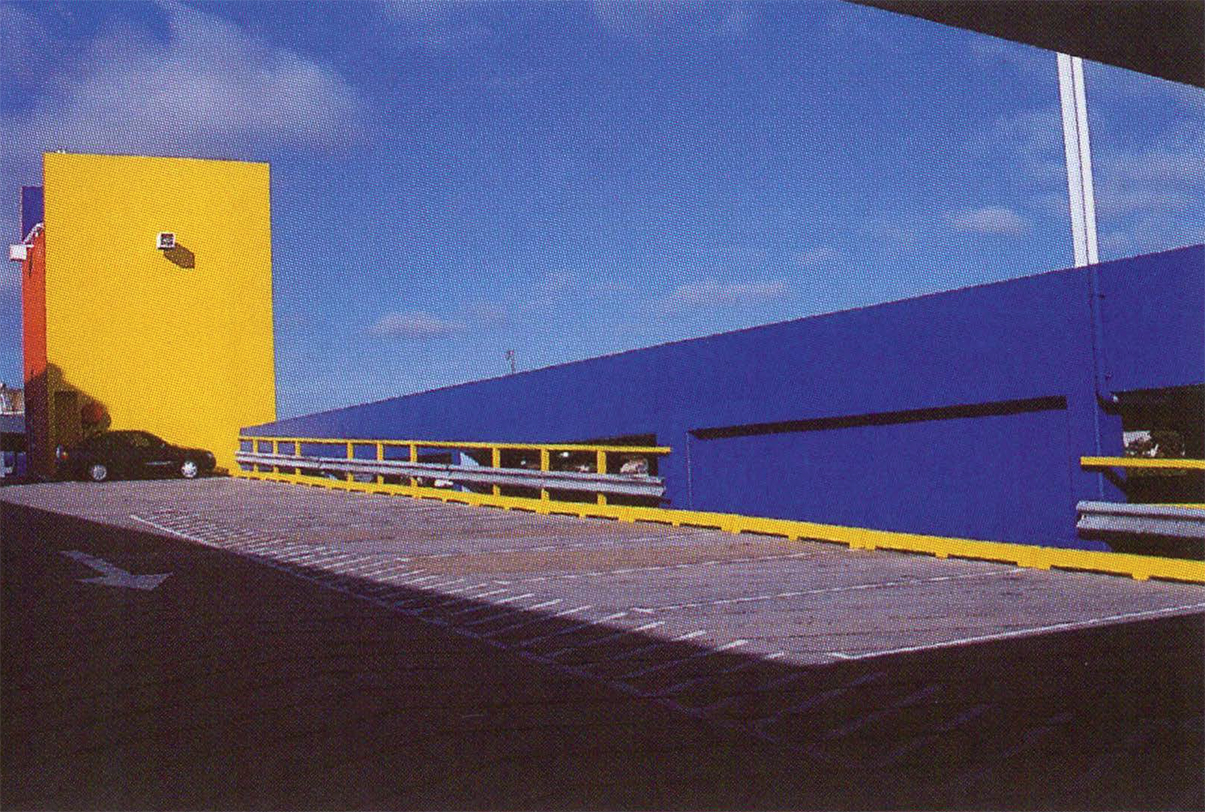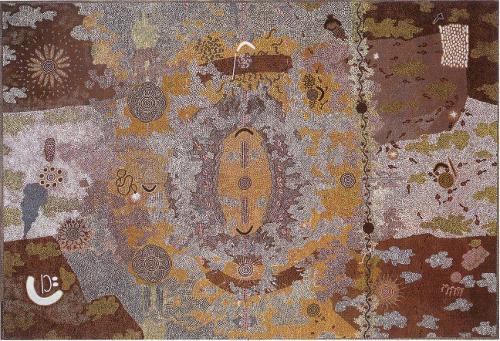
Within the urban fabric of Fremantle a number of walls - some highly visible and some more discreet - have undergone transformations through the application of colour in bold geometric motifs. This has occurred under the auspices of the self-titled group known as The Australian Centre for Concrete Art (AC4CA). The Queensgate Car Park is their seventh project and it is the most audacious and ambitious. As such it was funded by the local council, The City of Fremantle, and launched formally with a gathering in the presence of the Mayor on the roof of the car park on a sun-bleached morning in December.
The Queensgate Car Park is a five storey 1970s structure that has now metamorphosed from neutral tonality to a monument of vivid colour. The dominance of a deep blue on the façade and the introduction of yellow, lime green, orange and several differing hues of blue throughout, serve to re-identify the building as a matrix of planes and segments. Through the use of colour and in honouring the tradition of concrete art in the 20th century The Australian Centre for Concrete Art has 'depicted' the building and intervened with the differentiating coding of car park floors. The inherent Brutalist aesthetic has been modified. Despite the garishness of the palette its effect actually makes the original aesthetic less overt and turns the building into a more formalist sculptural proposition.
This distinguishes it from other projects by the group where painting is generally confined to single walls or walls between buildings.
Consequently, the scale, three-dimensionality and impact of The Queensgate Car Park announces its presence more virulently and might divide its audiences on a number of fronts. It could be debated as to whether it articulates or denies the architecture and whether this matters. The choice of palette will cause conjecture. Some will consider the palette lairish, others exuberant, some distasteful and non-contextual. Some will see symbols where none are intended. The understanding of the principles of concrete art in its eradication of applied meaning will not be evident or accepted by all spectators, drivers or passers-by. Without question though, it will be noticed and will create dialogue, whether it is a passing remark or an informed rethink of what constitutes public art.
It is noteworthy to consider this project at a time when the State Government through the Department of Culture and the Arts and the Department of Housing and Works has published its review of the Percent For Art Scheme, Integrating Views. Refreshing and rigorous as this document is and with recommendations from a considered and consultative process that seem to have been appropriately welcomed, it naturally underlines the aim for the integration of art with architecture. The tenor of the Percent For Art Scheme is for the engaging of artists and art into new building and public design in the formative stages.
The Queensgate Car Park project is dramatically different in that it is a post-architectural response, not a refurbishment or renovation but a paint job. Importantly and relevantly though, it is a private initiative that attracted major public funding. It involved gallerists, multiple artists, professional painters and councillors. While it exercises the strategies of an art movement that was first mooted in Europe in the 1930s, it curiously offers in 2003 a vital example of possibility and a plateau from which progressive discussion about art and the environment might continue to be encouraged.
It also represents the energy of group dynamics and the transference of arts language between artists from across the country and across the world. Julian Goddard of Goddard de Fiddes has led the group and all participants have been inspired and shaped by influential exchanges. These exchanges are ongoing between the Fremantle based artists Jurek Wybraniec, Trevor Richards, Helen Smith, Alex Spremberg and Andrew Leslie (now resident in Sydney) with Melbourne based artist John Nixon, Jan Van Der Ploeg from Amsterdam, Daniel Goettin from Basel and most recently David Tremlett from Great Britain. Local archivist and librarian Chris Hill and house painter Rauno Jarvinen have also been instrumental in the realisation of projects.
Unlike their 1930s antecedents this group has not declared a manifesto although in a recent article by Goddard in Monument No 57 its organic and purposeful evolution has been positively elaborated and intent alluded to with the acknowledgment of 'the aggressiveness of their visual intervention'. The scope of their ideas has reached new levels literally and metaphorically with the painting of the car park. If impact is a motivation and a measure of the generating of discourse this is demonstrative. It is possible though that had the Queensgate Car Park been painted more consistently with the group's previous projects and the whole building worn a geometric pattern rather than adhering so closely to the architectural lines, the statement might have proven even more expansive.












